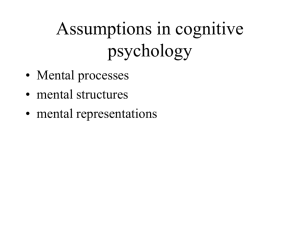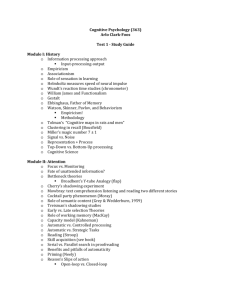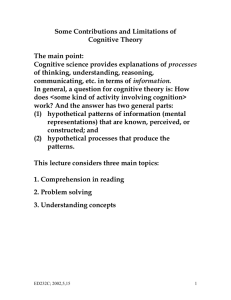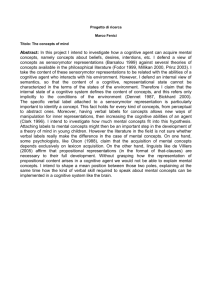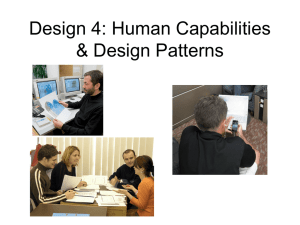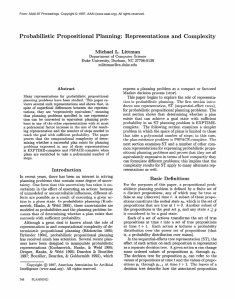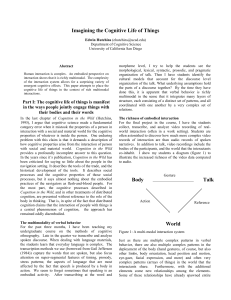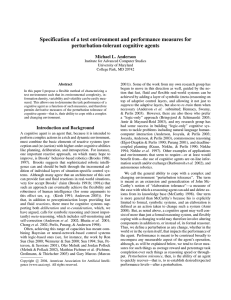Theories of Mind: An Introduction to Cognitive Science Jay Friedenberg
advertisement
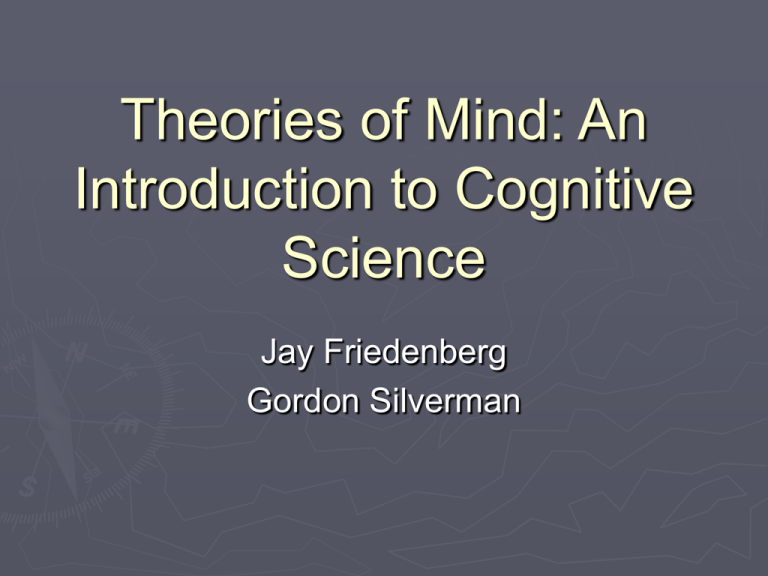
Theories of Mind: An Introduction to Cognitive Science Jay Friedenberg Gordon Silverman Chapter One Introduction: Exploring Inner Space What is cognitive science? • • • • The scientific interdisciplinary study of the mind. Uses the scientific method as well as other methodologies. Encompasses multiple diverse disciplines. Cooperation and communication between these disciplines is important. Aspects of representation • • • A representation stands for something else; it is symbolic. The thing a representation stands for is called its referent. A representation is realized by an entity such as a human or computer. Categories of representation 1. 2. 3. 4. Concepts. Stand for a single thing or group of things. The word Apple. Propositions. Statements about the world. The sentence, “Mary has black hair.” Rules. Specify the relationship between propositions. “If it is raining, I will bring my umbrella.” Analogies. Allow us to make comparisons. Relationship between shoes and tires. Digital representations • • • • Information is coded discretely using fixed symbols such as letters or numbers. Values can be specified exactly. Many operators can be applied to the symbols. Rules of these operations are called syntax. Analog representations • • • • Information represented in a continuous way. Subject to fewer operations than digital representations. Provide simple, direct solutions to some problems. Visual images are a good example. The dual-code hypothesis • • Ideas can be digital and analog. We can form a verbal representation of a boat or a visual image of it and convert between these two codes. However, concrete ideas such as “automobile” lend themselves better to analog representation while abstract ideas such as “justice” are better suited to digital symbolic representation. Propositional hypothesis • • • More complex ideas are represented as sentence-like propositions. The code for propositions is believed to be in an abstract logical format called a predicate calculus. A predicate calculus specifies the relationships between elements. Computation • • • Operations or transformations that are performed on representations. In mathematics, examples would include addition, subtraction, multiplication, and division. Broad categories of mental operations include sensation, perception, attention, memory, language, reasoning, and problem solving. The tri-level hypothesis • • • The computational level. Specifies the problem. The algorithmic level. Specifies the way the problem is solved. The implementation level. Specifies the medium or physical substrate in which the problem-solving procedure is executed. The interdisciplinary perspective The story of the three blind men and the elephant shows that a complex phenomenon is best understood when studied from multiple perspectives. Cognitive science approaches 1. 2. 3. 4. 5. 6. 7. 8. 9. The philosophical approach. The psychological approach. The cognitive approach. The neuroscience approach. The network approach. The evolutionary approach. The linguistic approach. The artificial intelligence approach. The robotics approach.
